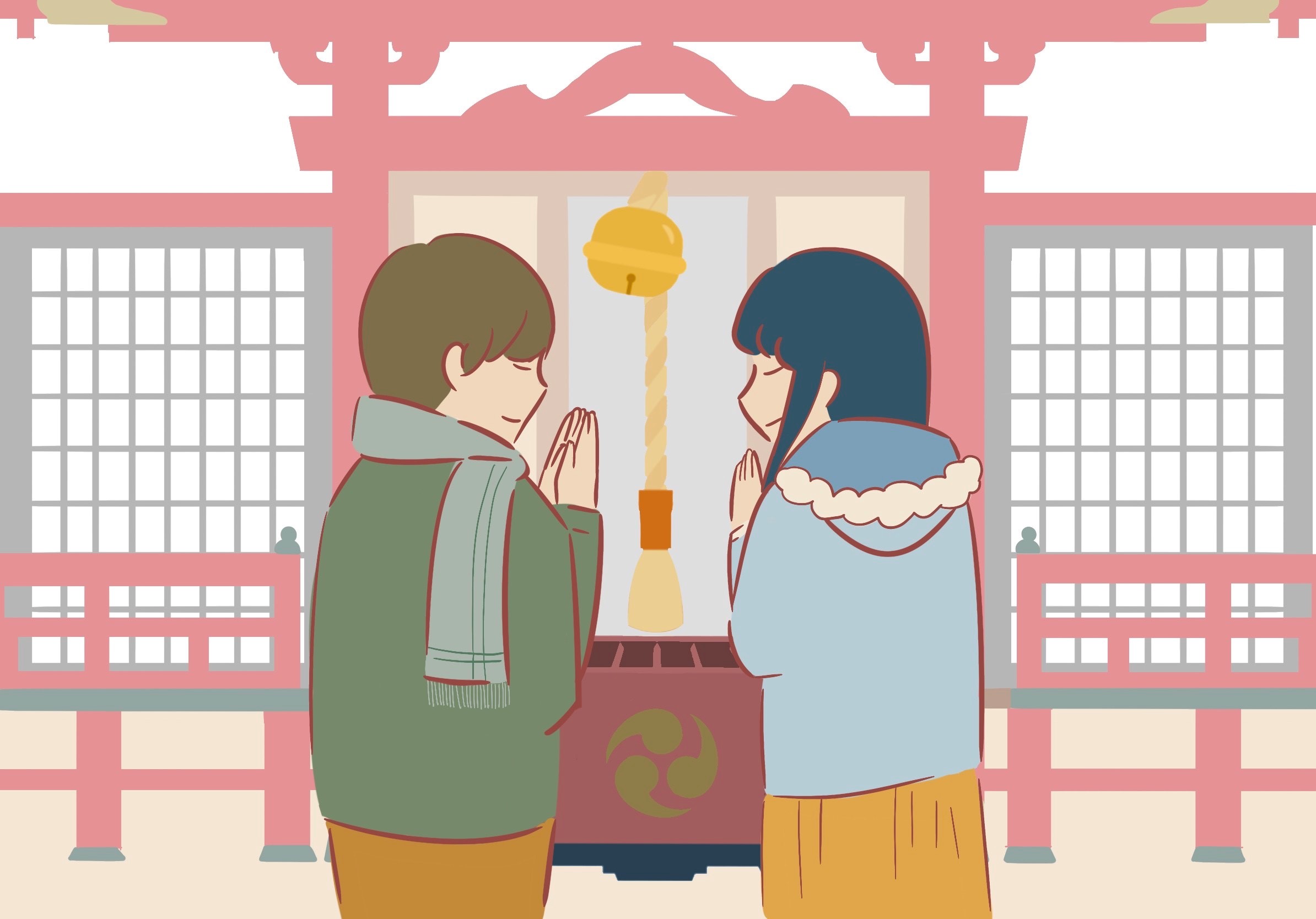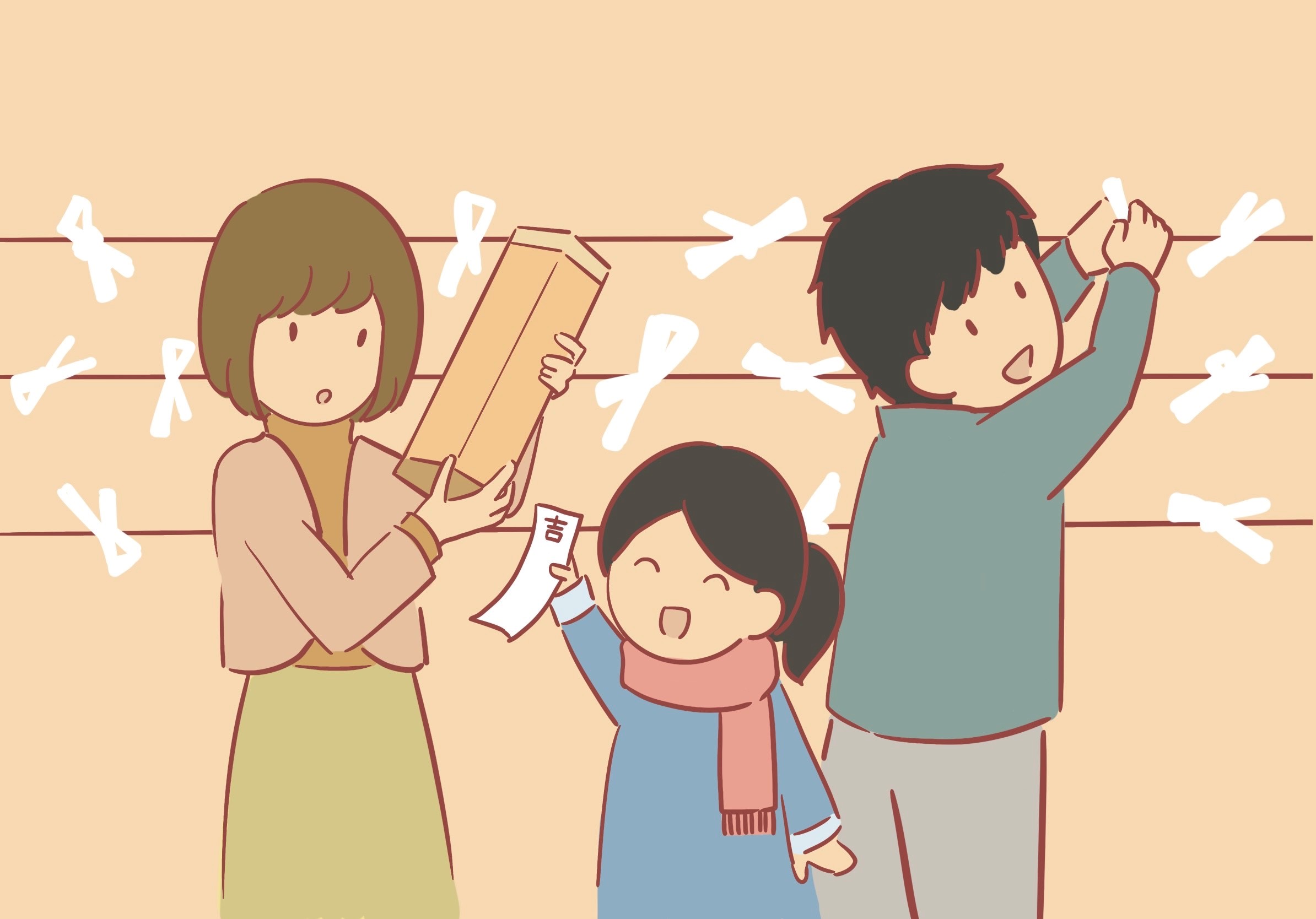Motto Shiritai Nihongo
The Words Used Regarding the Beginning of the New Year.
・Hatsumoude
・Omikuji
・Otoshidama
Happy New Year, everyone! In 2024, we will continue to introduce many useful Japanese words.
In this month's edition, we introduce words used during nenshi; the beginning of the year.
Nenshi[年始]is the period from January 1st to around January 7th, when the year begins.

Hatsumoude(初詣)
Hatsumoude is the first visit to a shrine or temple to pray, in the new year. Most people visit them between January 1st and 3rd(三が日) or between January 1st and 7th(松の内).
We pray at shrines and temples for a good new year. We also buy new amulets at shrines and temples, and return old amulets we bought the previous year. Famous shrines and temples are visited by large numbers of people, so they often queue up to pray. Some people visit shrines and temples near their homes.

Omikuji(おみくじ)
Omikuji is a lottery that may be drawn at shrines and temples to make wishes and see your fortune. On the fortune-telling slips you draw, you may see your fortune; such as Kichi or Kyo, and others. Kichi means blessing, and Kyo means bad fortune. There are also omikuji that address money, study, love, travel, health, and more. In some places, you may tie the omikuji you draw to a tree on the premises of the shrine or temple. Of course, you may take omikuji home with you.
Otoshidama(お年玉)
Otoshidama is the giving of money or goods to celebrate the new year. In the old days, otoshidama used to be rice cakes (mochi). When you give money, you put it in a special small envelope. Fathers, mothers, grandfathers, grandmothers, and relatives often give otoshidama to children. You may change how much otoshidama you give based on the age of the child.
